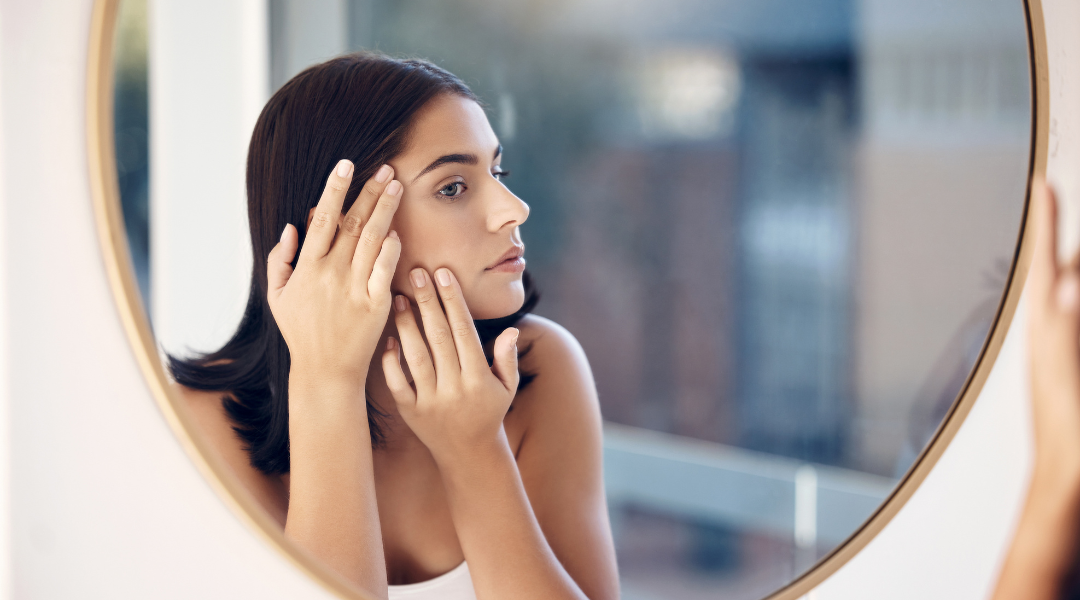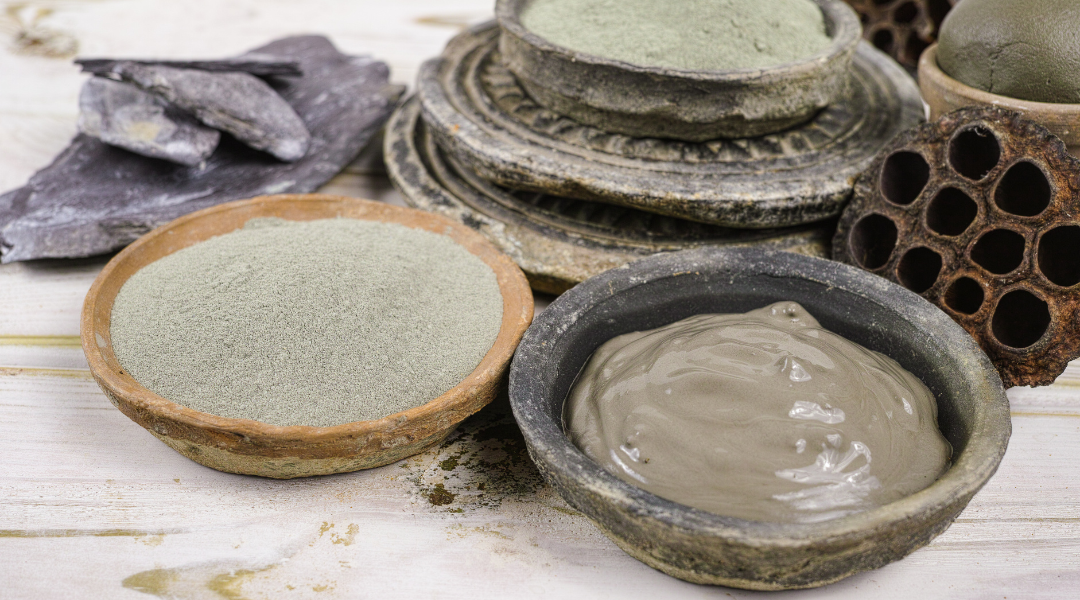 Acne and skin blemishes are irritating enough, mentally and physically. The last thing anyone wants is those pestering acne blemishes to turn into difficult to cure scars. When it comes to skin scarring, prevention is king; however, not everyone is fortunate enough to avoid facial scars, be it from acne or other physical traumas. The good news? Scars can be treated. Best of all, the abolishment of scars can be achieved entirely naturally too. However, before we dive into exactly how you can kick-start the regenerative and corrective process, let’s have a quick chat about how and why scars develop in the first place. Oh and while we have you here, be sure to also read this article at some point to learn how get rid of acne for good. This way we won’t have to worry about future breakouts that might lead to new scars.
Acne and skin blemishes are irritating enough, mentally and physically. The last thing anyone wants is those pestering acne blemishes to turn into difficult to cure scars. When it comes to skin scarring, prevention is king; however, not everyone is fortunate enough to avoid facial scars, be it from acne or other physical traumas. The good news? Scars can be treated. Best of all, the abolishment of scars can be achieved entirely naturally too. However, before we dive into exactly how you can kick-start the regenerative and corrective process, let’s have a quick chat about how and why scars develop in the first place. Oh and while we have you here, be sure to also read this article at some point to learn how get rid of acne for good. This way we won’t have to worry about future breakouts that might lead to new scars. [caption id="attachment_28178" align="aligncenter" width="594"]

Acne scars treated by The Alitura Clay Mask, Derma Roller, Gold Serum and Night Cream![/caption]
How a Scar is Formed As children, our metabolisms were robust, fast, and regeneration was near perfect. Meaning, we could fall down, get scraped and cut up—and we would not only heal fast—but with little-to-no scarring. Then aging hits, and chronic stress and slowing metabolisms take effect. This not only results in us feeling less energetic, but less energy means less healing capacity for the body. Ultimately, the reason the skin starts to scar in response to an injury is because our metabolisms aren’t as efficient as they once were. Here’s what I mean… When our metabolism slow, we produce less carbon dioxide and oxygen, and a greater amount of lactic acid. Either of these situations turns on the production of a protein that acts as a barrier system for injures cells. On the short-hand this is helpful, acting as the framework for collagen production. However, over the long-term, this protein substance increases the distance oxygen and glucose has to travel to the injury. This results in an overproduction of collagen, which causes fibrotic tissue also known as scar tissue. So in simpler terms, a scar is nothing more than imperfect healing, where the body over produces collagen from a lack of proper cellular repair. Tips for Naturally Remedying Scars (Scar Tissue) Now that we have a better understanding of why scars happen in the first place, we have some great insight as to how to prevent them and even heal them. Here are a few worthwhile things to start implementing into your life for scar healing/skin regeneration:
-
Topical Retinoids: One simple way to support the health regeneration of the skin tissue is with the bioavailable form of vitamin A, also known as retinol. Vitamin A is beneficial for scarring in simple and complex ways. Starting off with the simple, vitamin A is essential for regulating the sebum gland, which produces oil. In a vitamin A deficiency, the oil gland is usually overactive, leading to acne, inflammation and eventually and potentially scaring. Vitamin A also is an antagonist to estrogen, and estrogen can contribute to inflammation in a few ways. First, estrogen increases the skin cells affinity to water, which can cause edema (water retention and puffiness). However, edema also leads to inflammation, can may weaken the integrity of your skin, making them more prone to impartial healing and scaring. Estrogen also steals oxygen from the mitochondria, causing cellular stress that may damage the skin cells. Our Gold Serum actually contains an organic, plant-derived form of Vitamin A that uniquely shares similar physiological mechanisms to retinol. It has been proven to combat fine lines and wrinkles, promote skin regeneration.

-
-
Vitamin E: Vitamin E helps to directly accelerate the healing of scars/wounds. It is known to be a natural anti-thrombotic substance, meaning it helps with blood clotting. Vitamin E travels the bloodstream, supporting proper clot formation and thereby accelerating the healing of cuts, burns and wounds. It can also prevent scar tissue production by regulating the production of collagen, and in some instances, it might be capable of restoring coherence to fibrotic/scar tissue. In fact, it has been proven to function in this way in many areas of the body according to a study done at Johns Hopkins. Our Moisturizer, Gold Serum and Night Cream all contain vitamin E-rich olive oil. 1
-
-
Anti-Stress Herbs: Stress & Skin Degeneration
-
Stress is the major contributor to the formation of scar tissue and incomplete healing and regeneration. When our bodies undergo stress (be it a wound, dietary stress or oxygen deprivation), our requirements for glucose (sugar) are greatly intensified. Every cell in the body requires glucose for function and structure, which is why stress intensifies the need for it, to regenerate and cope with stress. The first thing that happens when we undergo stress is that our bodies use its available glucose, then eventually it uses stored glucose a.k.a glycogen. Once available and stored sugar is used up, the body starts to breakdown tissues, like our skin, to make glucose to handle the stress. In other words, stress can catabolize and destroy our skin tissue leading to things like accelerated skin aging, wrinkles, thin skin, etc. The major hormone that “wastes” the skin during stress is cortisol. Fourtuatey, there are simple, natural ways to mitigate stress, lower cortisol and increase our bodies resistance to stress so our skin doesn’t start breaking down. Considering the catabolic role the stress hormone cortisol has in degrading the skin, some clinically proven herbs to lower its production should prove therapeutic. Of the many herbs that lower cortisol, Ashwagandha, Rhodiola, Cordyceps, Ginkgo Biloba and Schizandra have all been proven to be effect in clinical trial. To learn more about the connection between stress and skin health, be sure to read this other article. 2,3,4,5
-
Dermarolling: A dermaroller is one of the hottest trends to hit the natural health and beauty scene. It is basically a hand-held tool for microneedling, which involves rolling tiny titanium needles gently over the surface of your skin to stimulate regeneration of the skin. Sounds a little dangerous, we know. However, there is no pain if you do it correctly and minimally invasive. There also happens to be science backing its effects too. In one study, 36 out of the total of 37 people who were treated with a dermaroller were evaluated. “Out of 36 patients, 34 achieved a reduction in the severity of their scarring by one or two grades. More than 80% of patients assessed their treatment as ‘excellent’ on a 10-point scale. No significant adverse effects were noted in any patient.” 6 Other benefits from dermarolling include tighter and thicker skin, reduced fine lines and wrinkles, reduced hyperpigmentation, and stretch marks. To learn how to dermaroll, be sure to check out this earlier post.
-
Red Light Therapy: Sunlight, red light, or bright light in general are all very helpful for regenerating the skin. This sort of light penetrates easily into tissues, activates the formation of new cells as well as their differentiation. Bright light positively effects energy production, increasing the activity and genesis of mitochondria, as well as the activity of the DNA methyltransferase enzymes. In other words, it targets skin health at the root as we discussed earlier, right at the heart of the metabolism; the mitochondria.
In fact, red light is proven to accelerate wound healing, improves the quality of the scar, and reduce fibrosis. 7 In Conclusion If you’ve been feeling hopeless about your scars, don’t be. Our founder was ran over by an SUV, endured serious scarring in which he almost entirely healed using a lot of the methods we mentioned in this article. In addition to all of these tips here, keep in mind diet and overall lifestyle will have a strong effect on your metabolism and therefore skin. So, be sure to reference other articles to learn more about the Alitura lifestyle for optimal skin health. 
 Acne and skin blemishes are irritating enough, mentally and physically. The last thing anyone wants is those pestering acne blemishes to turn into difficult to cure scars. When it comes to skin scarring, prevention is king; however, not everyone is fortunate enough to avoid facial scars, be it from acne or other physical traumas. The good news? Scars can be treated. Best of all, the abolishment of scars can be achieved entirely naturally too. However, before we dive into exactly how you can kick-start the regenerative and corrective process, let’s have a quick chat about how and why scars develop in the first place. Oh and while we have you here, be sure to also read this article at some point to learn how get rid of acne for good. This way we won’t have to worry about future breakouts that might lead to new scars. [caption id="attachment_28178" align="aligncenter" width="594"]
Acne and skin blemishes are irritating enough, mentally and physically. The last thing anyone wants is those pestering acne blemishes to turn into difficult to cure scars. When it comes to skin scarring, prevention is king; however, not everyone is fortunate enough to avoid facial scars, be it from acne or other physical traumas. The good news? Scars can be treated. Best of all, the abolishment of scars can be achieved entirely naturally too. However, before we dive into exactly how you can kick-start the regenerative and corrective process, let’s have a quick chat about how and why scars develop in the first place. Oh and while we have you here, be sure to also read this article at some point to learn how get rid of acne for good. This way we won’t have to worry about future breakouts that might lead to new scars. [caption id="attachment_28178" align="aligncenter" width="594"] Acne scars treated by The Alitura Clay Mask, Derma Roller, Gold Serum and Night Cream![/caption] How a Scar is Formed As children, our metabolisms were robust, fast, and regeneration was near perfect. Meaning, we could fall down, get scraped and cut up—and we would not only heal fast—but with little-to-no scarring. Then aging hits, and chronic stress and slowing metabolisms take effect. This not only results in us feeling less energetic, but less energy means less healing capacity for the body. Ultimately, the reason the skin starts to scar in response to an injury is because our metabolisms aren’t as efficient as they once were. Here’s what I mean… When our metabolism slow, we produce less carbon dioxide and oxygen, and a greater amount of lactic acid. Either of these situations turns on the production of a protein that acts as a barrier system for injures cells. On the short-hand this is helpful, acting as the framework for collagen production. However, over the long-term, this protein substance increases the distance oxygen and glucose has to travel to the injury. This results in an overproduction of collagen, which causes fibrotic tissue also known as scar tissue. So in simpler terms, a scar is nothing more than imperfect healing, where the body over produces collagen from a lack of proper cellular repair. Tips for Naturally Remedying Scars (Scar Tissue) Now that we have a better understanding of why scars happen in the first place, we have some great insight as to how to prevent them and even heal them. Here are a few worthwhile things to start implementing into your life for scar healing/skin regeneration:
Acne scars treated by The Alitura Clay Mask, Derma Roller, Gold Serum and Night Cream![/caption] How a Scar is Formed As children, our metabolisms were robust, fast, and regeneration was near perfect. Meaning, we could fall down, get scraped and cut up—and we would not only heal fast—but with little-to-no scarring. Then aging hits, and chronic stress and slowing metabolisms take effect. This not only results in us feeling less energetic, but less energy means less healing capacity for the body. Ultimately, the reason the skin starts to scar in response to an injury is because our metabolisms aren’t as efficient as they once were. Here’s what I mean… When our metabolism slow, we produce less carbon dioxide and oxygen, and a greater amount of lactic acid. Either of these situations turns on the production of a protein that acts as a barrier system for injures cells. On the short-hand this is helpful, acting as the framework for collagen production. However, over the long-term, this protein substance increases the distance oxygen and glucose has to travel to the injury. This results in an overproduction of collagen, which causes fibrotic tissue also known as scar tissue. So in simpler terms, a scar is nothing more than imperfect healing, where the body over produces collagen from a lack of proper cellular repair. Tips for Naturally Remedying Scars (Scar Tissue) Now that we have a better understanding of why scars happen in the first place, we have some great insight as to how to prevent them and even heal them. Here are a few worthwhile things to start implementing into your life for scar healing/skin regeneration:









Leave a comment